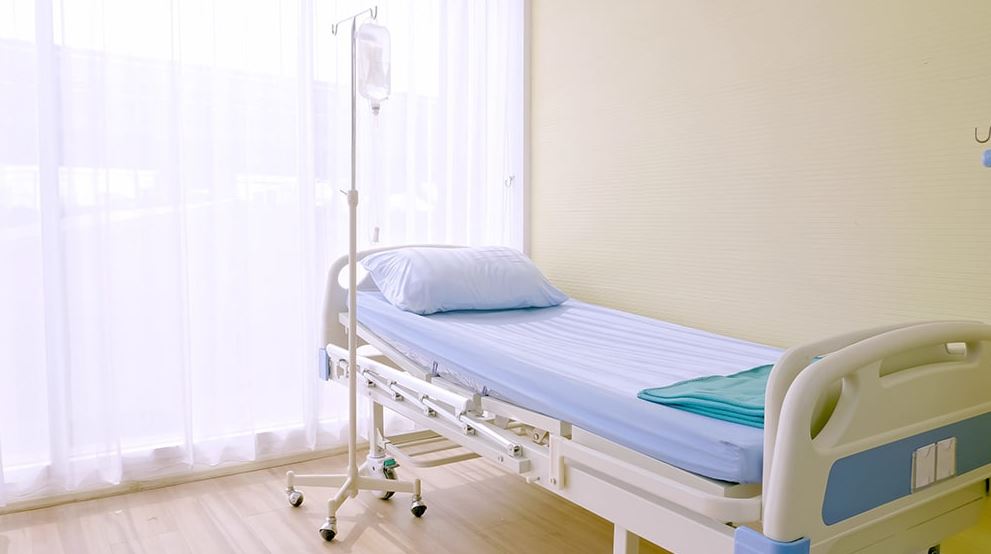
Quick Summary:
There is an ocean of hospital bed mattresses on the market today. How do you choose the right one for your needs?
Start by understanding the different types: foam, alternating pressure, lateral rotation, and innerspring. Each kind has its distinct benefits. Although features will vary from one mattress to another, explore the benefits of waterproof covers, CPR valves, personalized settings, and zoned support areas.
Consider your patient’s needs.
How often will they leave their bed?
How much do they weigh?
Are they being cared for at home or in a facility?
What kind of bedframe do they have?
After selecting the best mattress for your needs, maintenance is crucial. We highly recommend mattress covers to prevent stains and discourage bacterial growth. Frequently check air pump filters. Examine your mattress’s condition and replace it when it sags, stains, or loses its support.
Click a link to jump to the section.
Introduction
If your loved one spends a lot of time in a hospital bed, it’s important to choose a mattress that optimizes their comfort.
Standard mattresses provide comfort and support for people with more mobility who only lie in bed to sleep or rest for several hours each day. Hospital-grade mattresses offer more features to improve the quality of life for patients who spend most of their time in bed.
When purchasing a hospital bed mattress, consider the type, the user’s needs, desired features, and maintenance requirements.
Types of Hospital Bed Mattresses
The first step in finding your best hospital bed mattress match is knowing your options. Vitality Medical offers several types, including foam mattresses, alternating pressure mattresses, lateral rotation mattresses, and innerspring mattresses.
Foam Medical Mattresses:
- Best for basic comfort and moderate use
- Available with and without contoured foam
- Layers provide varying levels of firmness
- Top Rated:


Alternating Pressure Mattresses:
- Designed for patients at risk of pressure injuries
- Air cells inflate and deflate individually as needed
- Quiet operation
- Lightweight with high weight capacity
- Top Rated:
Low Air Loss and Lateral Rotation Mattresses:
- Used for advanced care or immobile patients
- Help prevent pulmonary complications
- Cells rotate on a set schedule
- Top Rated:
Innerspring Mattresses:
- Traditional option, less common in medical care
- Firm and durable coils
- Vented options available
- Top Rated: Medline Vinyl Innerspring Homecare Mattress
Key Factors To Consider
With so many options, it may be overwhelming. To narrow down the selection, think about what features are most beneficial to your patient’s needs. Consider their level of mobility, weight, pressure ulcer risk, care environment, and bed frame type.
- Patient Mobility:
- How often does the patient get out of bed?
- Do they need assistance from a caregiver?
- A lateral rotation mattress is a better fit for less mobile patients
- Risk of Pressure Sores:
- If the patient will spend a lot of time in bed, consider a mattress that redistributes pressure and reduces the risk of pressure ulcers.
- Alternating pressure mattresses are designed for this exact purpose


- Weight Capacity:
- What is the patient’s body type?
- Will they need additional support?
- Bariatric mattresses are bigger and have a higher weight capacity than standard mattresses.
- Bed Compatibility:
- What kind of bed frame does the patient have?
- What are the dimensions?
- If the bed is electric, can the mattress bend with the frame?
- Care Environment:
- Where is the patient receiving care?
- How often can a caregiver move them to help prevent bed sores?
- Innerspring mattresses are most common in a home environment.
Special Features To Look For
Each mattress type has its perks. A few to keep in mind are antimicrobial covers, CPR valves, quiet air pump operation, personalized settings, and zoned support areas.
Waterproof and Antimicrobial Covers
- Keep hospital mattresses clean and dry
- Protect against bed bugs and dust mites
- Are easy to remove and clean
- Reduce the risk of mold growth
- Extend the life of the mattress
CPR Valves
- Quickly release air from the mattress in case of an emergency
- Facilitate cardiopulmonary resuscitation
Quiet Operation and Comfort Settings
- Allow powered mattress options to move without making loud noises
- Provide adjustable settings to best suit the user’s needs
Zoned Support Areas
- Redistribute pressure
- Help prevent bed sores
Maintenance and Cleaning Tips
Establishing a mattress cleaning routine for home care will have a positive impact on its longevity. See the mattress’s owner’s manual for additional safety tips and maintenance recommendations.
Consider a mattress cover. They come in a variety of sizes, are easy to clean, and protect the mattress from stains and other damage. They will help extend the life of your mattress and save you money over time.
If the mattress is inflatable, check the air pump filter regularly and replace as needed. This will maximize both its efficiency and the patient’s comfort.
Hospital mattresses last a long time. However, some of the signs that it’s time for a replacement include:
- The middle of the mattress sags
- The mattress no longer supports the patient
- There are stains from sweat or other bodily fluids
If possible, periodically rotate the mattress to even out wear and tear.
Conclusion
There is no universal fit for hospital bed mattresses. Several factors play into selecting the right solution for each patient’s needs. These include the patient's mobility, risk of developing bed sores, weight, and care environment.
Cleaning and maintaining your mattress will optimize its longevity. Invest in a mattress cover. Regularly replace air pump filters. Replace the mattress if it has stains, the middle sags, or if it no longer provides adequate support to the user.
Vitality Medical sells a variety of hospital bed mattresses. Browse our selections of foam, alternating pressure, low air loss, lateral rotation, and innerspring medical mattresses today!
